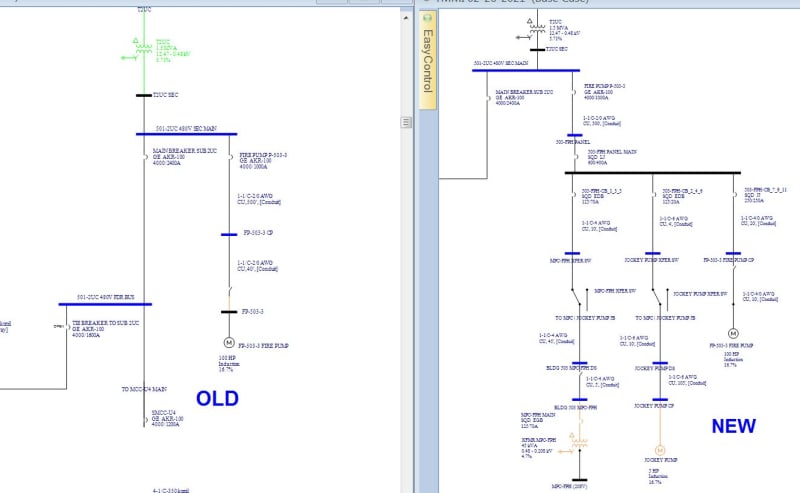bdn2004
Electrical
- Jan 27, 2007
- 799
We've an industrial Client that recently changed how their original fire pump installation is wired. Originally it was wired to the transformer's secondary through a 1000 Amp low voltage power circuit breaker in a switchgear. The electric pump is 100 Hp and has a Jockey Pump, and it was all wired through a controller. They did it to make the testing of the aux equipment easier.
We've been asked to provide arc flash labels etc after the fact.
The new installation took the old feeder, terminated them in a new panelboard, and ran the conductors to the controller through molded case circuit breakers. The panelboard has a main breaker. The jockey pump and the other auxiliary loads in that pump house got dual feeds through transfer switches from another source.
Looking through the NEC article 695...First, does that article apply to all facilities like this? Anyone have any experience to offer some advice? I certainly don't want to bring this up to our Client without some good advice.
We've been asked to provide arc flash labels etc after the fact.
The new installation took the old feeder, terminated them in a new panelboard, and ran the conductors to the controller through molded case circuit breakers. The panelboard has a main breaker. The jockey pump and the other auxiliary loads in that pump house got dual feeds through transfer switches from another source.
Looking through the NEC article 695...First, does that article apply to all facilities like this? Anyone have any experience to offer some advice? I certainly don't want to bring this up to our Client without some good advice.

